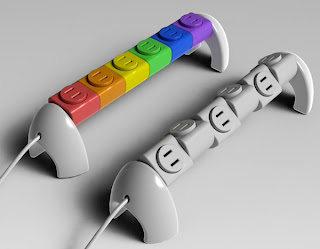Equipotentiality, with the meaning "having equal potential" or "having the same electric potential at every point". Let's see how we can use this TRIZ inventive principle to create new ideas for solving problems.
Let's say one day you spilled some ketchup or mayo on the floor or table, and it looks like a priceless work of art:
 |
| Source: Google Image |
Chances are you'll be stumped to find ways of transferring it onto a better place or medium to store and preserve your accidental work of art (without messing it up). Luckily, some people have gone and invented that exact gadget for you.
 |
| Source: diginfo.tv |
Utilizing a unique extending conveyor with a Teflon surface, the invention is able to pick up sol or gel materials just like ketchup without mixing it or disturbing it's composition. Looking at it in motion is like watching the old tablecloth trick where you quickly pull off the tablecloth without touching the cups or dishes on it. Except that this invention can do it in reverse:
Also, the extending conveyor has a key innovation that allows it to pick up sol-gel materials without deforming it: the conveyor slides and rotates like a tank's caterpillar track:
 |
| Source: Wikipedia.org |
This Teflon-coated track distributes the sliding pressure of the conveyor over a large contact area gradually under the tomato paste, therefore preserving the shape or form. And it is here we see TRIZ's inventive principle "Equipotentiality/remove stress" in action. By distributing the pressure or forces acting on the tomato paste equally and gradually across the track, we're able to move thick-liquid materials without totally destroying it's shape or form. This is a great example of using known solutions or physical properties to solve a problem in a different domain.
Of course, the inventors has other uses for it other than picking up ketchup, mainly for moving materials in an industrial production line. But I could think of another awesome use for it: picking up slightly-moist dog crap...













